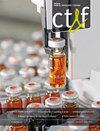哥伦比亚卡塔通博盆地热成熟度史及其油气勘探意义
IF 0.5
4区 工程技术
Q4 ENERGY & FUELS
引用次数: 9
摘要
以哥伦比亚Catatumbo盆地为研究对象,建立了结合油气地球化学研究的热模拟模型,为油气勘探提供含油气系统数据。热模型与成熟度数据的校准考虑了一个不断变化的热流方案,其中包括侏罗纪末的一次热增加和始新世早期的另一次热增加,与裂谷事件有关。局部活动/生油烃源岩位于向斜轴内。白垩系烃源岩(Capacho组和La Luna组)的排烃时间开始于上古新世—始新世,而Los Cuervos组的排烃时间开始于10万年。古新世-中新世排出的石油很可能积聚在白垩纪末期形成的构造中,而安第斯造山带形成的较年轻的构造则是由较老的构造迁移而来的,另外还有最年轻的新近生成的碳氢化合物。油气的聚集主要是盆地内部局部生成和运移的结果。卡塔通博盆地含不同热成熟度的热成因湿气,热成熟度在0.1 ~ 2.5 Ro之间。成熟度指标和热模拟结果表明,南部地区热演化程度最高,具有较好的含湿气远景。中部和北部地区似乎更有石油前景,天然气储量较少。本文章由计算机程序翻译,如有差异,请以英文原文为准。
THERMAL MATURITY HISTORY AND IMPLICATIONS FOR HYDROCARBON EXPLORATION IN THE CATATUMBO BASIN, COLOMBIA
A thermal model integrated with an oil and gas geochemical study has been constructed for the Catatumbo Basin, Colombia to provide petroleum system data for hydrocarbon exploration. The calibration of the thermal model with maturity data took into account a changing heat flow scheme which included a thermal increase towards the end of the Jurassic and another one in the Early Eocene, associated with rifting events. Locally, active/generating source rocks are within the synclines axes. The hydrocarbon expulsion time for Cretaceous source rocks (Capacho and La Luna formations) started in the Upper Paleocene-Eocene, while for the Los Cuervos Formation the generation and expulsion started at 10 my. The petroleum expelled during the Paleocene-Miocene, were likely accumulated in structures formed since the end of the Cretaceous, while the younger structures that resulted from the Andean orogen were charged by remigration from the older structures and additionally with the yougest lately generated hydrocarbons. The accumulations of hydrocarbons are mainly the result of generation and migration locally within the basin. The Catatumbo basin contains thermogenic wet gases with different degrees of thermal maturity which varies from around 1,0 to 2,5 equivalent Ro. The highest degree of thermal evolution according to maturity indicators and thermal modeling is in the southern area, which is prospective for wet gas. The central and northern area appears more prospective for oil with minor amounts of gas.
求助全文
通过发布文献求助,成功后即可免费获取论文全文。
去求助
来源期刊

Ct&f-Ciencia Tecnologia Y Futuro
Energy-General Energy
CiteScore
1.50
自引率
0.00%
发文量
7
审稿时长
>12 weeks
期刊介绍:
The objective of CT&F is to publish the achievements of scientific research and technological developments of Ecopetrol S.A. and the research of other institutions in the field of oil, gas and alternative energy sources.
CT&F welcomes original, novel and high-impact contributions from all the fields in the oil and gas industry like: Acquisition and Exploration technologies, Basins characterization and modeling, Petroleum geology, Reservoir modeling, Enhanced Oil Recovery Technologies, Unconventional resources, Petroleum refining, Petrochemistry, Upgrading technologies, Technologies for fuels quality, Process modeling, and optimization, Supply chain optimization, Biofuels, Renewable energies.
 求助内容:
求助内容: 应助结果提醒方式:
应助结果提醒方式:


